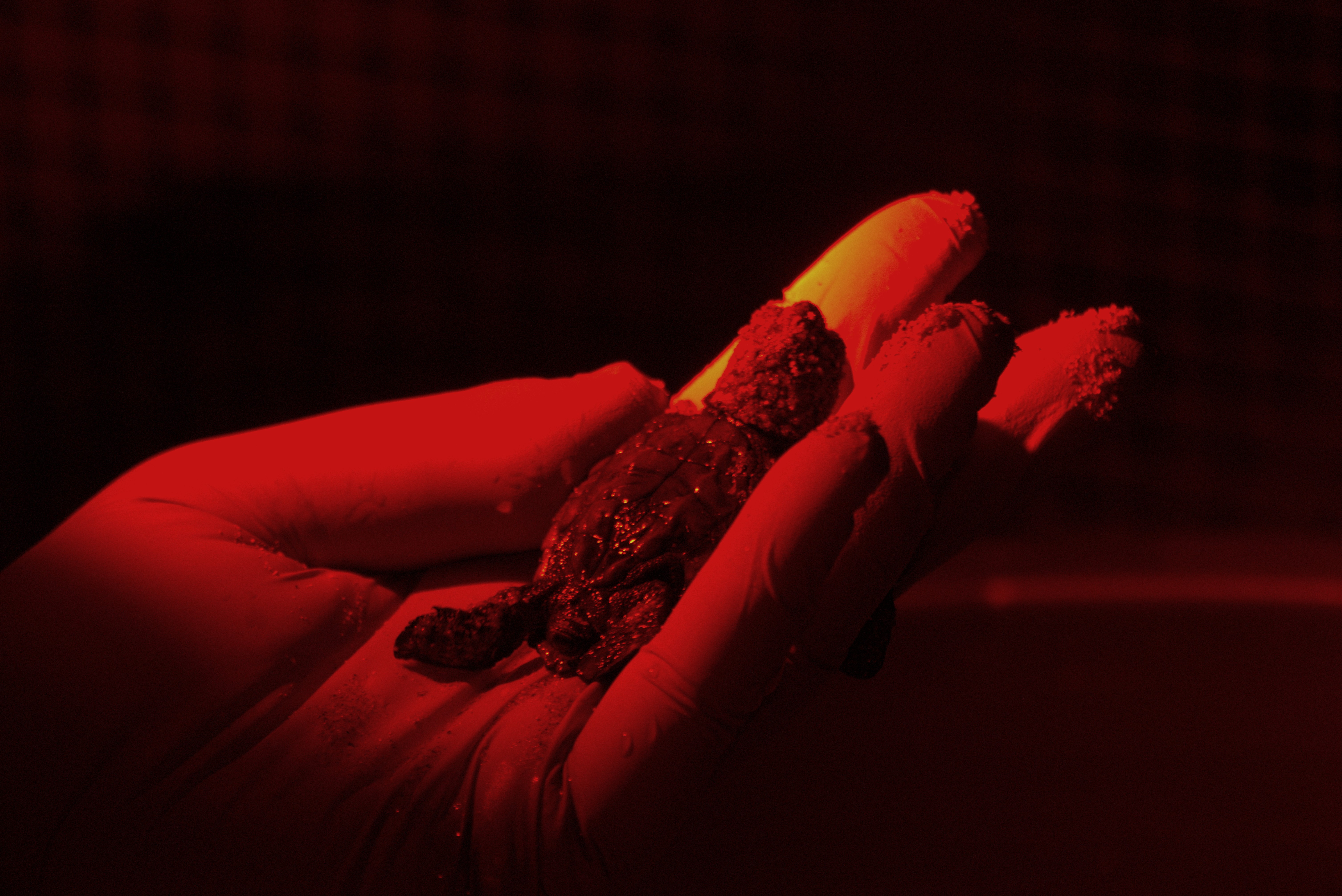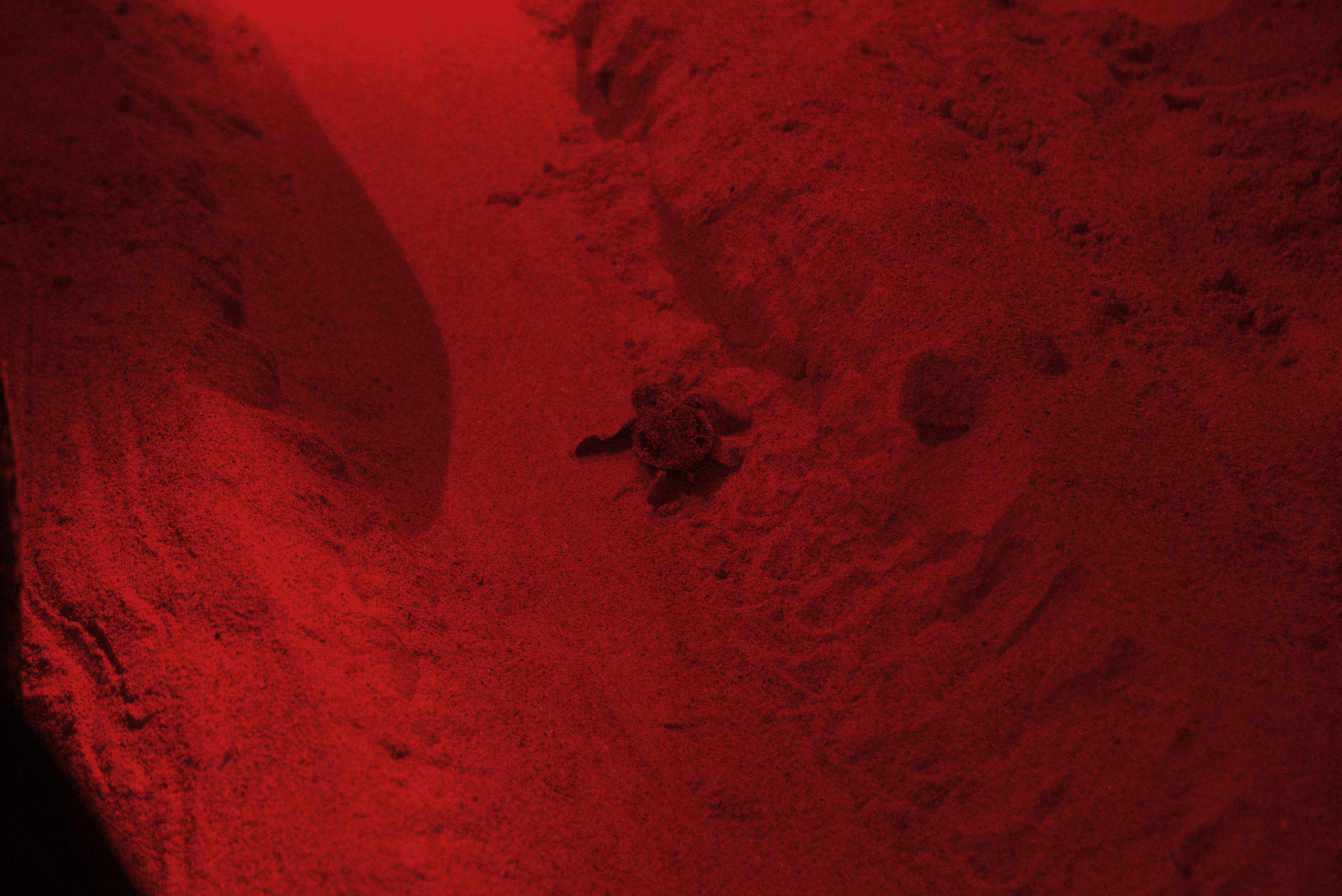
Operazione Caretta – Infiltrato al Nido
A spontaneous volunteering experience that became a live communication system protecting a loggerhead turtle nest and the people that guarded it.
Project dossier
- Title: Operazione Caretta – Infiltrato al Nido
- Tagline: When communication becomes protection.
- Period: Summer 2025
- Location: Campomarino Lido, Italy
- Associations: GADIT Termoli · Centro Studi Cetacei · Local volunteers and environmental guards
- Mission: Protect a Caretta caretta nest through monitoring and public awareness.
Role & contributions
Volunteer communicator & Digital storyteller.
Contribution
- Joined day and night patrols, documenting rituals and data for the nest’s protection.
- Built a live mini-site within 24 hours to share updates, field notes and conservation guidance.
- Created visual and written content to raise awareness among residents and visitors.
- Tools used: Camera · Drone · Canva · Notion · HTML/CSS.
- Ongoing support: Continued collaboration on digital strategy and the redesign of an association’s website.
Motivation
The project began from pure curiosity. Hearing about the nest, I visited the beach and stayed. What started as observing turned into contributing, giving visibility to an invisible story unfolding in real time.
Approach & methodology
- Field immersion: participated in monitoring shifts alongside volunteers.
- Rapid prototyping: launched a dedicated website overnight to host live updates.
- Story-based communication: used photography, video and first-person storytelling to engage the community.
- Community engagement: turned passers-by into allies through conversations and shared resources.
Operating principles
- Respond quickly with the tools at hand.
- Keep the story grounded in the volunteers’ daily effort.
- Invite collaboration instead of broadcasting.
Key results
- Live website became the reference hub for information about the nest.
- Communication materials used by all the associations pages and posts.
- Strengthened collaboration between associations for future marine conservation storytelling.
Impact
Communication evolved from documentation to protection: every update invited people to care for the nest, turning curiosity into stewardship.
Learnings
- Communication can be a shield when it connects people emotionally to the environment.
- Shared purpose creates natural leadership, even without formal structure.
- Small actions carry deep value: one turtle reaching the sea can justify weeks of effort.
Field story
From curiosity to commitment
Two weeks beside a sea turtle nest, filled with endless waiting, a single life born, and the silent work of those who keep watch. Sometimes the deepest experiences come when you stop chasing something grand and simply let yourself be absorbed by what is in front of you.
It did not end as I hoped, and that is okay. When I came home on the morning of September 14, with sand still in my pockets and the image of all those unhatched eggs still in my eyes, I understood that the meaning was not in the ending. It was in everything that happened before: the sleepless nights, the cold coffees under the stars, the conversations with curious children, and that single hatchling that had run toward the sea six days earlier.
That one small life that made it was worth all the weeks of waiting. But let’s take a step back.
How it all began: one evening, a camera, a spark of curiosity
I had just arrived at the seaside house to spend some time with my parents. One evening I found out about the nest because my mother told me she was following it on Facebook. It was one of those nights when strange ideas come to mind with no real plan. I grabbed my camera and decided to take a couple of shots. I went out around 11 p.m., thinking I would take one photo, maybe two, and then go home. Instead, I ended up staying until late at night, sitting on the sand and talking with the volunteers who guarded that small square marked by stakes and red and white tape.
There was something hypnotic about that vigil. It was not just protection; it was a form of silent resistance. People who, after work, instead of going home to the couch, came to the beach to watch over something they hoped to see born. It was an act of faith in nature, in the possibility that sixty days of incubation could become small lives running toward the sea.
The next evening I came back. Not for the photos, but because that place had caught me. I started to help. Nothing official, nothing written. Just my enthusiasm, helping to fix cable ties and the fence, the desire to contribute, and a friendly approach that made me feel part of the group right away.
That is how an unwritten collaboration began. At first, I mentioned that I worked in communication and, since I was on vacation, I could take some pictures and record videos for them. Then, after a few chats and growing trust, I started covering a few shifts, taking photos, explaining the nest to passersby, quietly becoming one of “the nest people,” as curious onlookers would say.
Life at the watchpoint: when time is measured in tides
For two weeks, time was no longer measured in hours but in tides. The routine was not marked by an alarm clock but by the sound of waves coming closer and moving away from the nest. Coffee grew cold while you watched the sand, shoes were always full of grains, feet stayed bare on the cool September nights, and red flashlights drew circles of light around that protected space.
The watchpoint was its own small ecosystem. There were regular volunteers who never missed a shift, others who came when they could, families with children stopping by in curiosity, and tourists who first thought it was a construction site but then stayed half an hour listening to the story. It was beautiful to see how that small square of sand became a gathering point, a pretext to talk about oceans, migration, and natural cycles we often forget.
We were not just guardians; we were translators. The volunteers’ job, and mine after a few days of learning, was to translate the silent language of nature, the language of science, into something people could understand when they asked, “What are you doing?” Every time a child walked away saying, “I hope they all hatch,” we knew something had changed, even just a little.
It was also pure science: daily observations, temperature data from the first weeks, notes to be taken during hatching, parameters and measurements that would enrich our knowledge of creatures we still know far too little about.
The endless wait: when hope becomes an act of courage
We waited for days, hoping to see the sand move, a crack, a small collapse, any sign that life was pushing upward beneath that still surface. Waiting in that context became almost meditative. It forced you to slow down, to observe details, to synchronize with rhythms that are not human.
On September 7, at four in the morning, came the time for the first inspection. With delicate hands we began to dig the first layer of sand. And there it was: a tiny hatchling. Alive, strong, moving with the instinctive determination only newborns have. We released her into the sea, watching her crawl toward the horizon that would become her home for years to come.
It was a magical moment. Watching that small creature run toward the waves, guided by an ancient instinct, felt like witnessing a daily miracle that never stops being extraordinary. We stopped the inspection and closed the nest again, convinced it was just the beginning and that in the coming days more hatchlings would appear.
But six days later, on September 13, during the final inspection, we dug to the bottom. What we found was different from what we hoped for: closed eggs, about half unfertilized, others with interrupted development at various stages. Probably the early August storm, which had endangered the nest for days, had drowned the forming embryos.
The silence that night was deafening. Not the silence of peace, but the silence of awareness. Nature sometimes has its own plans that do not align with our dreams. The only life born was the one we had seen run toward the sea days earlier. Just one, out of dozens of eggs.
A single life, but one that matters
It was not the ending we hoped for, but every night of waiting, every tired smile of the volunteers, and every word spoken to curious children had a deep meaning that went beyond the numbers.
That nest was not a failure. It was an act of preservation, a gesture made to protect the turtles that, without the volunteers’ effort, would have gone elsewhere, drawn by city lights. The eggs might have been eaten by predators or crushed by an unaware tourist planting an umbrella. The work of guarding, protecting, and explaining was valuable for the animals and for us. It was a memory gathered with care, an experience that created bonds between people. It showed that protecting nature means protecting the possibility of life itself, even when we are not sure it will happen.
And that little turtle that made it? She carries with her all our sleepless nights, every act of care, all the hope we placed in that waiting. The nest is now just a patch of sand like the others, but maybe twenty-five years from now, she will return to that very beach to lay her own eggs.
The value of waiting in a world that runs
There is something profoundly countercultural about the experience of the watchpoint. In a world that measures everything in productivity and instant results, watching over a turtle nest forces you to slow down and accept that some processes cannot be accelerated or controlled.
Waiting there was not wasted time. It was time invested in possibility, in hope, and in proving that there are still spaces where humans can serve the natural world without expecting anything in return.
Gallery


